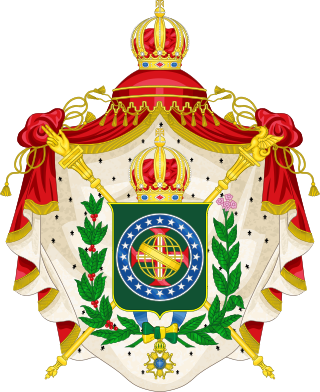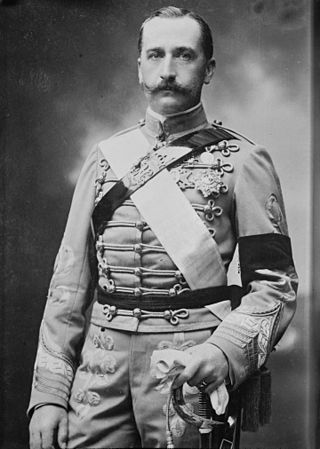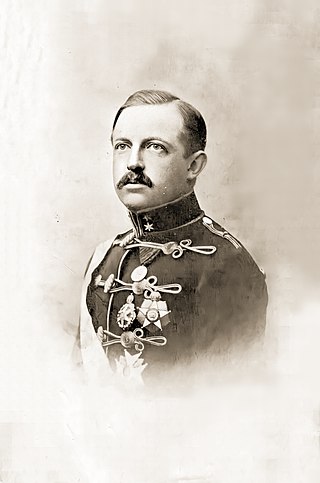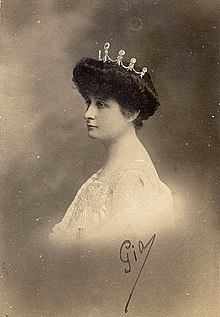
Francis I of the Two Sicilies was King of the Two Sicilies from 1825 to 1830 and regent of the Kingdom of Sicily from 1806 to 1814.

The Imperial House of Brazil is a Brazilian dynasty of Portuguese origin, a branch of the House of Braganza, that ruled the Brazilian Empire from 1822 to 1889, from the time when the then Prince Royal Dom Pedro of Braganza declared Brazil's independence, until Dom Pedro II was deposed during the military coup that led to the Proclamation of the Republic in 1889.

Prince Pedro Henrique of Orléans-Braganza, nicknamed The Expected Prince was the eldest son of Prince Luís of Orléans-Braganza and Princess Maria di Grazia of Bourbon-Two Sicilies, and head of the Vassouras branch of the Imperial House of Brazil from 1921 until his death in 1981.

DomPedro de Alcântara of Orléans-Braganza, Prince of Grão Pará was the first-born son of Dona Isabel, Princess Imperial of Brazil and Prince Gaston of Orléans, Count of Eu, and as such, was born second-in-line to the imperial throne of Brazil, during the reign of his grandfather, Emperor Dom Pedro II, until the empire's abolition. He went into exile in Europe with his mother when his grandfather was deposed in 1889, and grew up largely in France, at a family apartment in Boulogne-sur-Seine, and at his father's castle, the Château d'Eu in Normandy.

Pedro Luiz of Orléans-Bragança was the eldest son of Prince Antônio of Orléans-Braganza and Princess Christine de Ligne, being the grandson of Prince Pedro Henrique of Orléans-Braganza and Princess Maria Elisabeth of Bavaria.

Prince Alfonso, Count of Caserta was the third son of Ferdinand II of the Two Sicilies and Archduchess Maria Theresa of Austria.

Prince Carlo of Bourbon-Two Sicilies, Duke of Castro is one of the two claimants to the headship of the House of Bourbon-Two Sicilies.

The House of Orléans-Braganza is by legitimacy, the imperial house of Brazil formed in 1864, with the marriage of the heir to the Brazilian throne, Isabel of Braganza with Prince Gaston, Count of Eu. The House of Orléans-Braganza never reigned, as Brazil's pure Braganza monarch, Emperor Pedro II being deposed in a military coup d'état, under the pressure of the civilian republicans, in 1889. However, with the death of Isabel in 1921, as the last Brazilian pure Braganza, her descendants inherited the dynastic rights of the Brigantine dynasty over the defunct Brazilian throne.

Don Carlos, Prince of Bourbon-Two Sicilies, Infante of Spain was the son of Prince Alfonso of the Two Sicilies, Count of Caserta and his wife Princess Maria Antonietta of Bourbon-Two Sicilies, and nephew of the last King of the Two Sicilies, Francis II.

Princess Maria Luisa of Bourbon-Two Sicilies was the youngest daughter of King Ferdinand II of the Two Sicilies and his wife Archduchess Maria Theresa of Austria. She was known for her piety and for her charity to the poor.

Prince Francis of the Two Sicilies, Count of Trapani was a member of the House of Bourbon-Two Sicilies.

Prince Luigi Carlo Maria Giuseppe of Bourbon-Two Sicilies, Count of Aquila was a member of the House of Bourbon-Two Sicilies.

Princess Maria Cristina of Bourbon-Two Sicilies was the titular Grand Duchess of Tuscany from 28 February 1942 to 4 October 1947 as wife of Archduke Peter Ferdinand of Austria, Prince of Tuscany, the titular Grand Duke.

Princess Maria Immaculata Cristina Pia Isabella of Bourbon-Two Sicilies was the fourth child and eldest daughter of Prince Alfonso of Bourbon-Two Sicilies, Count of Caserta and his wife Princess Maria Antonietta of Bourbon-Two Sicilies.

Prince Luís of Orléans-Braganza, nicknamed "the Perfect Prince", was the second son of Isabel, Princess Imperial of Brazil and Prince Gaston, Count of Eu, and patriarch of the Vassouras branch of the House of Orléans-Braganza. His grandfather, Pedro II of Brazil, was the last emperor of Brazil.

The Royal Chapel of Dreux situated in Dreux, France, is the traditional burial place of members of the House of Orléans. It is an important early building in the French adoption of Gothic Revival architecture, despite being topped by a dome. Starting in 1828, Alexandre Brogniart, director of the Sèvres porcelain manufactory, produced fired-enamel paintings on large panes of plate glass for King Louis-Philippe I, an important early French commission in Gothic Revival taste, preceded mainly by some Gothic features in a few jardins paysagers.

Princess Maria Antonietta of Bourbon-Two Sicilies was a Princess of Bourbon-Two Sicilies by birth and by her marriage to Prince Alfonso, Count of Caserta, claimant to the defunct throne of the Two Sicilies.

Maria Pia of the Two Sicilies was a Princess of the Two Sicilies and titular Duchess consort of Parma as the wife of Robert I, Duke of Parma. Maria Pia was the daughter of King Ferdinand II of the Two Sicilies and his wife, Maria Theresa of Austria. Maria Pia was forced into exile along with the rest of her family after the unification of Italy in 1861.

Princess Maria Elisabeth of Bavaria, nicknamed "Empress-mother", was a German princess of the House of Wittelsbach, granddaughter of King Louis III of Bavaria and wife of Prince Pedro Henrique of Orléans-Braganza, the pretender of the Vassouras branch as Head of the Imperial House of Brazil.




















